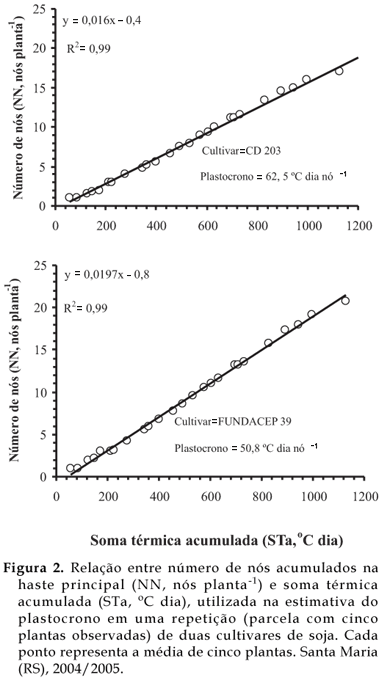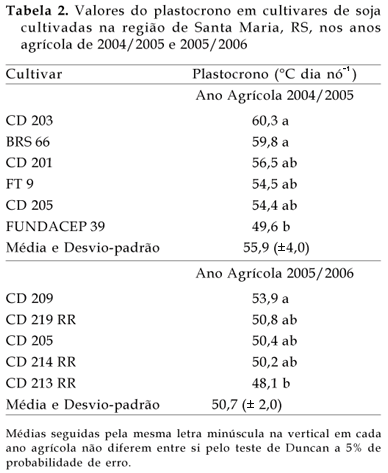A parameter widely used in development simulation models of dicot species is the time interval between the appearance of two successive nodes on a stem, known as plastochron, with units of ºC day node-1. The objective of this study was to estimate the plastochron in some soybean (Glycine max (L.) Merrill) cultivars recommended for Southern Brazil. Two experiments were carried out at Santa Maria, RS, Brazil, one during the 2004/2005 and another during the 2005/2006 growing season. Six cultivars (BRS 66, CD 201, CD 203, CD 205, FT 9, FUNDACEP 39) were used in 2004/2005 and five cultivars (CD 205, CD 209, CD 213 RR, CD 214 RR, CD 219 RR) in 2005/2006, in a complete randomized block design, with two replications (average of five plants) in 2004/2005 and three replications (average of six plants) in 2005/2006. The plastochron was estimated by the inverse of the slope of the linear regression of the number of visible nodes on the main stem against the accumulated daily thermal time (base temperature of 10 ºC and an optimum threshold temperature of 30 ºC) from emergence. Many cultivars (CD 201, FT 9 and CD 205 in 2004/2005, and CD 219 RR, CD 205 and CD 214 RR in 2005/2006) had similar plastochron values. Considering all cultivars, the average and variation (lowest and greatest) value of plastochron were 55.9 (49.6 - 60.3) ºC day node -1 in 2004/2005 (a dry year), and 50.7 (48.1 - 53.9) ºC day node-1 in 2005/2006 (a wet year), respectively. These results and the fact that the plastochron of the CD 205 cultivar, used in both years, was also greater in the driest year indicate environmental (soil water deficit) effect on the plastochron.
node appearance; temperature; plant development; degree days; water deficit






